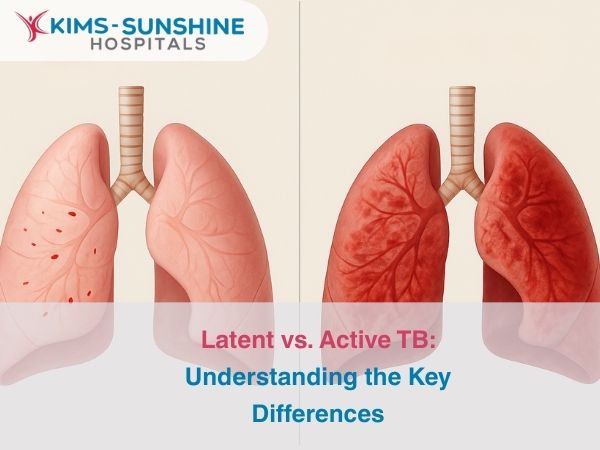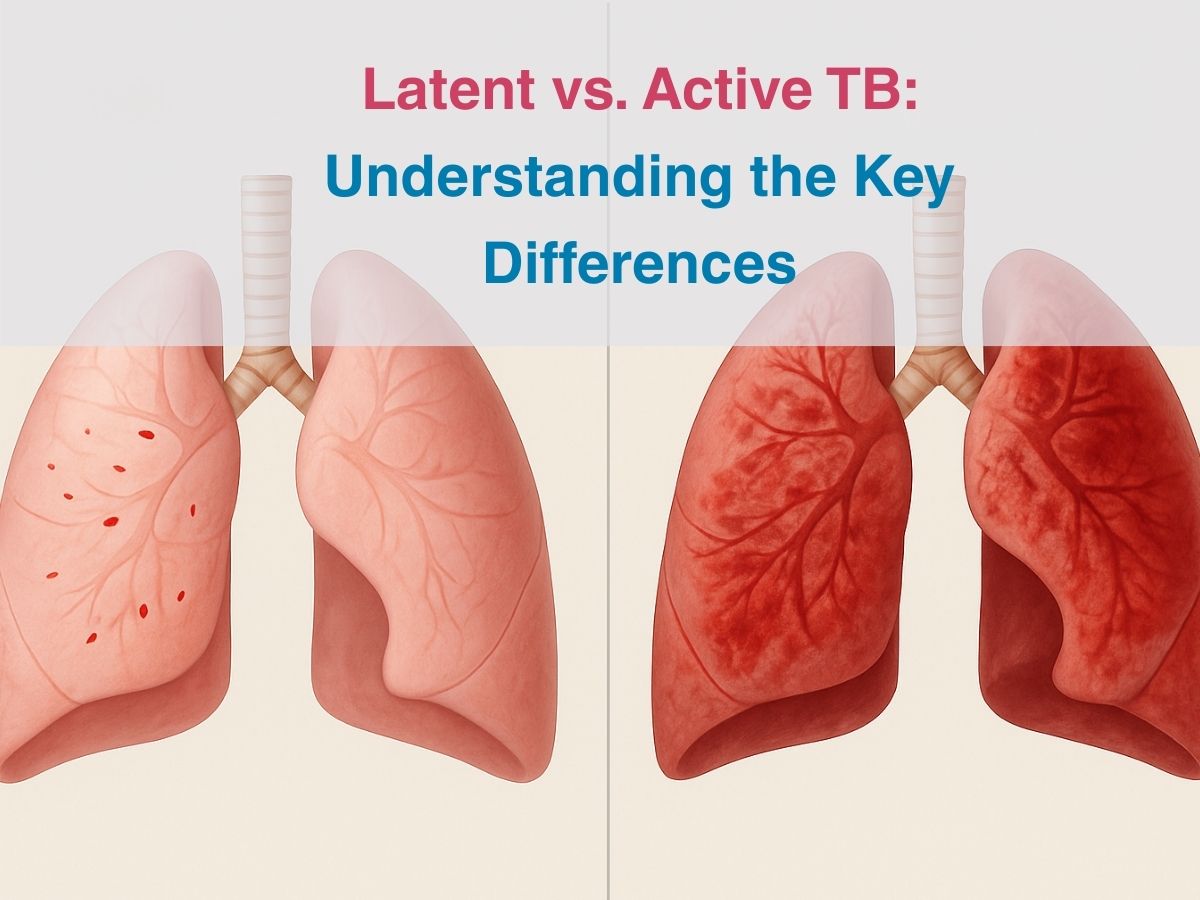
Latent vs. Active TB: Understanding the Key Differences

Tuberculosis is one of the most deadly, contagious bacterial infections of the lungs which can lead to complete damage of the lungs and death. Its main area of action is on the lungs – especially the apex, but it can also affect other organs like the spine, kidney, brain, bone and intestines.
India accounts for 27% of tuberculosis incidence in the world. But, the good news is that there is significant progress in incidence and death rates from 2015 to 2022. Almost 40% of the Indian population carries tuberculosis in a latent stage. Poverty, poor sanitation and malnutrition are few reasons as to why TB is so prevalent in India.
What Is The Difference Between Latent TB And Active TB?
Tuberculosis is caused by a bacterium named Mycobacterium tuberculosis – this disease has existed for thousands of years yet the understanding of this disease is still evolving.
Latent TB infection:
- Individuals exposed to the tuberculosis bacteria may not show any symptoms. This bacterium is in dormant stage or inactive in their body for a long time – even decades.
- In the cases of latent TB, affected persons do not look or feel sick and radiological signs like x-rays show normal findings.
- While we know that TB is a contagious disease, individuals with latent TB are not infectious as they don’t spread the infection.
- Treatment includes a course of anti TB medications for 9 months.
Active TB
- This condition is seen when an individual is actually suffering with symptoms of TB and is in a highly infectious state.
- There are symptoms which are visible – like cough lasting more than a month, weight loss, night sweats and frequent fevers.
- The radiological reports like x-ray are done to see changes in the lungs.
- These individuals are extremely contagious as they can actively spread TB just by cough, talking, sneezing or singing.
- Individuals infected with active TB remain contagious, until they complete a 3 week long course of effective TB medication.
Diagnosis
These tests are done for both latent and active TB conditions
- Tuberculin skin test or Mantoux test: the suspected person is injected with a small amount of tuberculin bacteria and is observed for 72hrs. If there is a raised, swollen area or induration at the injection site, then it is a confirmation of TB.
- Sputum tests
- Chest x-rays
- After the administration of BCG vaccine, false positives are common. So, tell your doctor about when you got vaccinated.
Tb In Children And Adults
TB in children is more rapidly progressive than in adults. Generally, most adults suffer from pulmonary TB where the infection affects the lungs. In children, it is characterised by infecting extra pulmonary organs like the brain causing meningitis or miliary TB. The symptoms are non-specific, difficult to diagnose and there is less microbiological confirmation available, when compared to adults.
Conclusion
Tuberculosis is a highly infectious disease because of its quick transmission. Individuals with latent TB are always at the risk of re-infection and progressing to the active stage. Hygienic habits like washing your hands and coughing while covering your mouth should be followed. Avoiding close contact with people, taking your regular medications and not going to crowded places until you’re certified as cleared with your health care professional can prevent the spread of tuberculosis.






